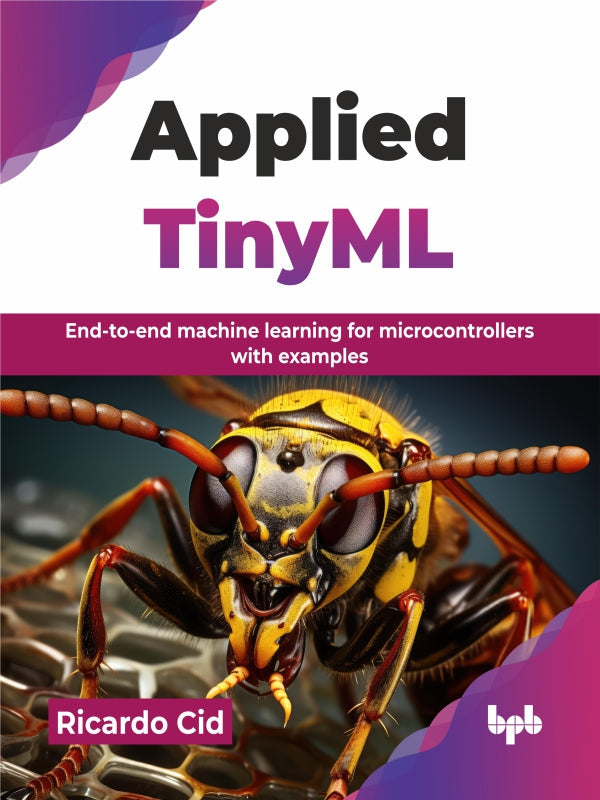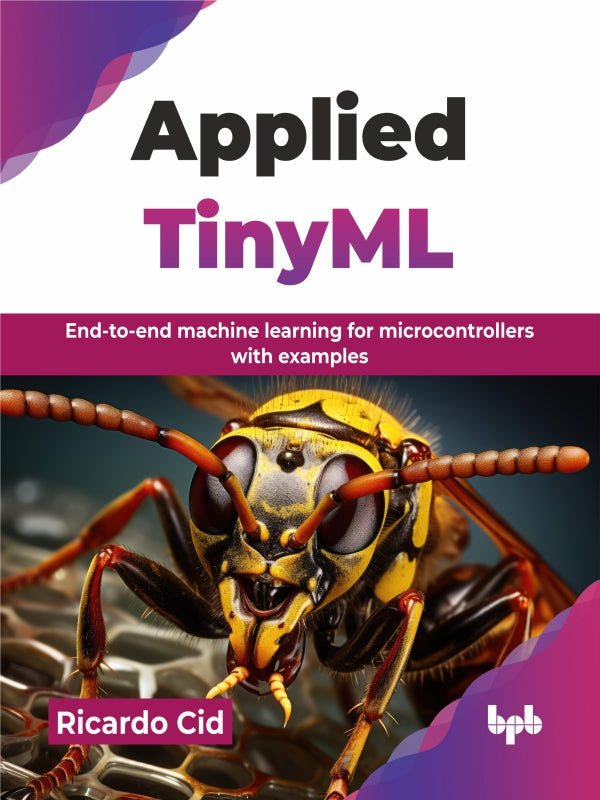Applied TinyML
Couldn't load pickup availability
ISBN: 9789365890716
eISBN: 9789365891799
Authors: Ricardo Cid
Rights: Worldwide
Edition: 2025
Pages: 272
Dimension: 7.5*9.25 Inches
Book Type: Paperback

- Description
- Table of Contents
- About the Authors
AI is useful when it runs in large machines in data centers, but only when it makes it down to stand-alone edge devices will it unlock countless new use cases and applications. TinyML is transforming AI by bringing ML capabilities to small, low-power devices at the very edge of the network.
This book will guide you through building these smart devices. It establishes TinyML's core foundations and a methodology for application development, from problem definition to power management and cost analysis. You will explore practical skills applications, learning sound, movement, and image classification, followed by advanced techniques like object tracking and sensor fusion, using methods such as Kalman filters. You will explore deep learning regression for predictive tasks and essential anomaly detection for identifying unusual patterns, all demonstrated through real-world use cases.
After reading this book, you will be fully equipped to design, build, and deploy complete TinyML systems, from data collection and feature extraction to model training, deployment, and hardware integration. You will gain hands-on skills and the practical engineering knowledge needed to bring intelligent low-power devices to life.
WHAT YOU WILL LEARN
● Build smart gadgets that recognize sounds and movements.
● Learn skills beyond coding to create TinyML systems.
● Design, build, and deploy TinyML applications.
● Design smart systems that can learn on their own.
● Make devices that understand and classify images.
● See how AI and ML fit into the real-world.
WHO THIS BOOK IS FOR
This book is for engineers, developers, and AI enthusiasts eager to build intelligent edge devices. No prior deep expertise in AI or electronics is required; it is perfect for anyone starting their journey in creating smart widgets with TinyML.
1. Foundation and Methodology
2. Sound Classification
3. Movement Classification
4. Image Classification
5. Object Tracking
6. Sensor Fusion
7. Deep Learning Regression
8. Anomaly Detection
Ricardo Cid is a mechanical engineer specialized in mechatronics who has been working with embedded systems for more than 20 years. At school, he was already helping a team at the engineering institute (UNAM) connect a washing machine to the internet even before the term IoT was coined (to this day, he has not figured out why connecting a washing machine to the internet is necessary). After finishing school, he moved to NYC to design stage robots for artists in his free time while working as the head of engineering for a very successful company in the travel industry, where he pioneered creating systems in the early days of the cloud, acquiring extensive experience in big data and massive traffic volumes.
Around 2015, he took a six-month residency at the Museum of Arts and Design at Columbus Circle with a project that earned him multiple awards, consisting of creating 3D-printed mechanisms that danced to music. Because of his unique skill set, which included mechanical engineering, electronics, enterprise software, APIs, cloud, and big data, one of the biggest and most prestigious real estate portfolios in NYC offered him the unique opportunity to build a smart building operating system from scratch, using more than 15 skyscrapers as a sandbox.
During that amazing gig, Ricardo experimented with massive amounts of data and conceived a series of applications for a then-new type of technology called machine learning. Ricardo and his team conceived dozens of prototypes, some of them never saw the light, but they laid the foundation for a series of algorithms that eventually saved hundreds of megawatts in multiple buildings across the U.S., including those of the federal government and the largest bank in the world.
At the end of his sixth anniversary at that company, Ricardo realized there was a massive opportunity to bring much of that intelligence to edge devices, avoiding critical cybersecurity and reliability single points of failure. In 2023, Ricardo created a design studio exclusively dedicated to architecting and building edge solutions that run ML models in constrained environments.


